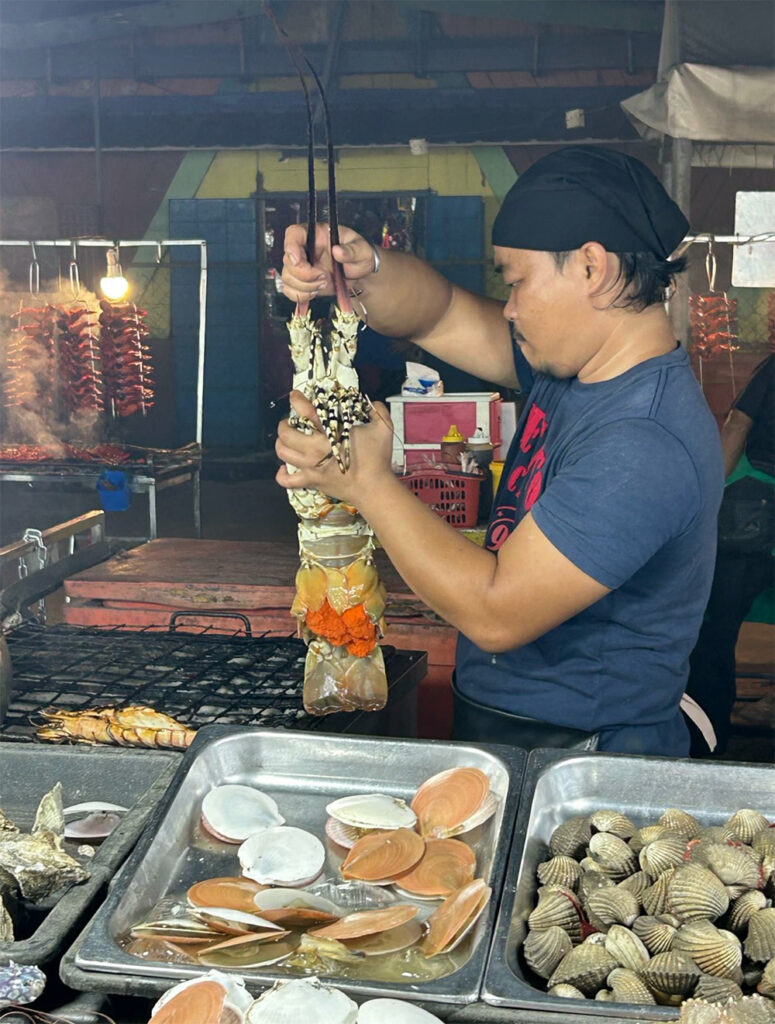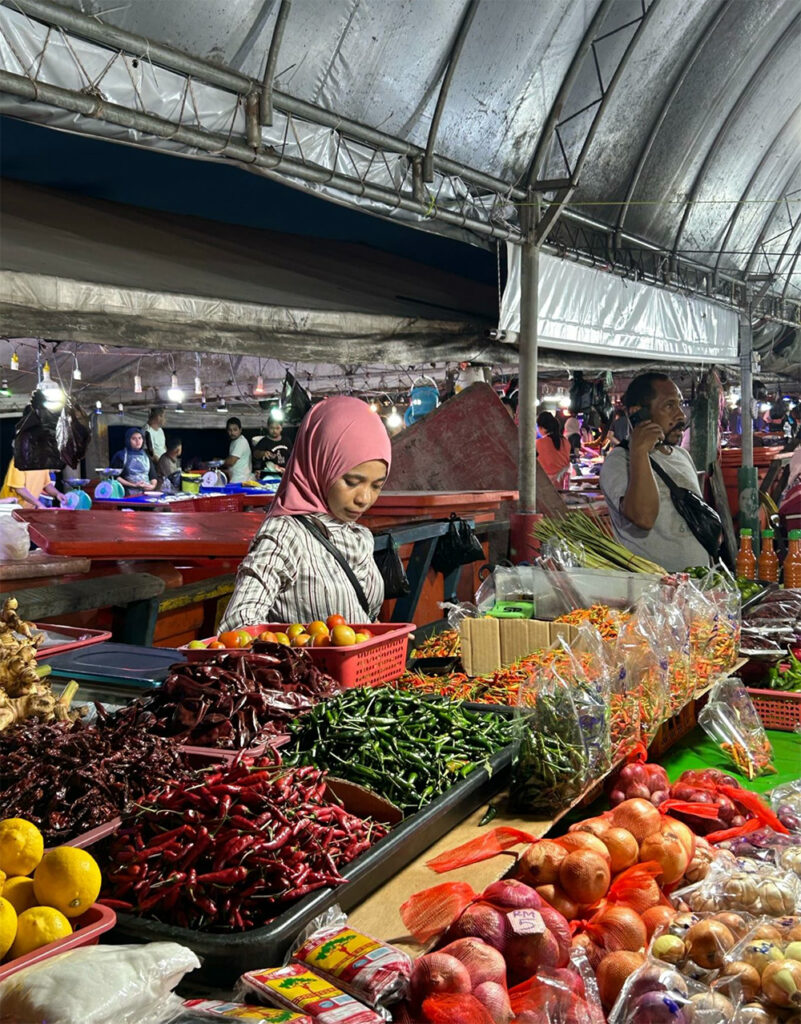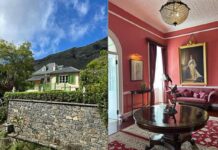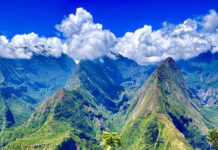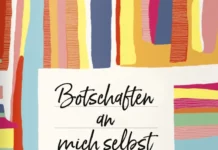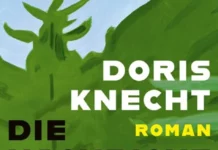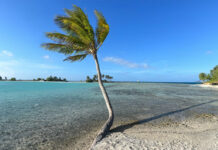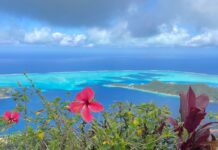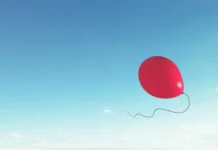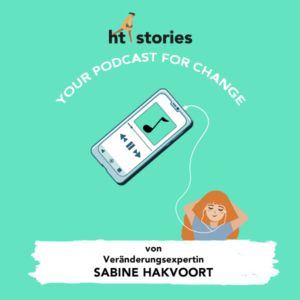The Durian tree on the Kinabatangan River bends under the weight of the many fruits. In the tangle of leaves and branches a glowing orange ball of fur appears that´s trying to catch the fruit with its long arms. Orang-Utans love them and we are very lucky to see one of the few great apes living in the wild. A large male works his way through the tree and we are witnessing a big snack attack. We sit in one of the many boats that travel along the river and that take tourists close to the trees so that they can observe the „Big Five“ of Borneo from there. These include the orang-Utans, the proboscis monkeys, which can only be found here, the various species of hornbill birds, the pygmy elephants and saltwater crocodiles.
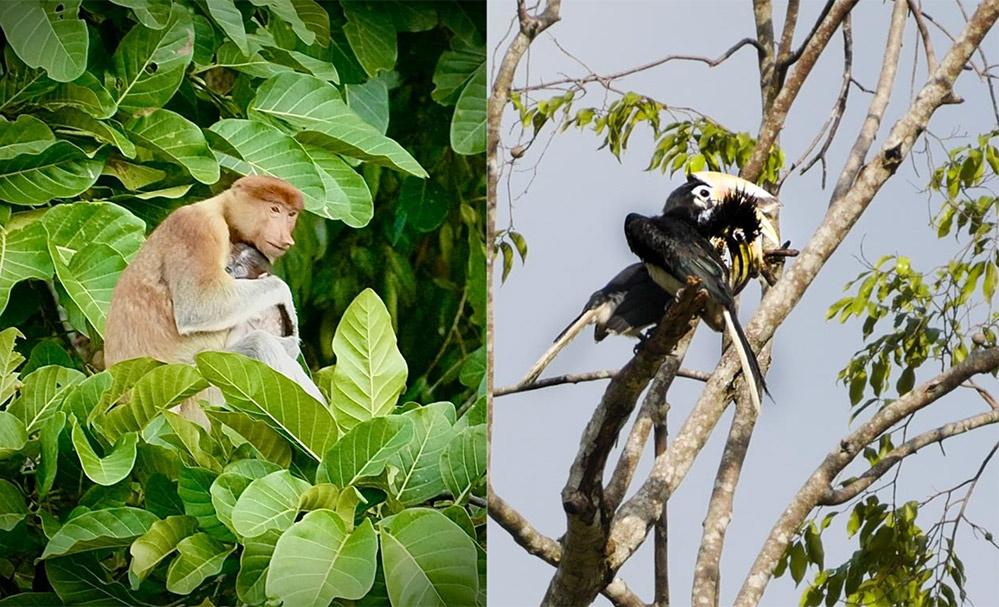
The „Big Five“ of Borneo
Early in the morning, before sunrise, the boats set off with their guests. The mist slowly lifts and the sun rises above the tops of the trees. The early morning is fresh and full of life. You can hear birdsong, the river murmurs, and our small birdwatching group chats quietly. Our guide has phenomenal powers of tracking wildlife. It is certainly training and habit, we too become more observant over time, but he recognizes everything, even at great distances. We see beautiful oriental hornbill birds that are always travelling in pairs. They become a pair and stay together for life. Even after the death of a partner, the widowed part remains single. An impressive example of fidelity in nature.
We see saltwater crocodiles of considerable size, certainly five metres long, which watch us very closely and very calmly. Considering that they can use their long tails to jump up to two meters out of the water, it feels good to keep a little distance.
The Kinabatangan River is the largest river in Sabah, the northern province of the Malaysian part of Borneo. It meanders through the forests, some of which are protected nature reserves. In some places, however, the deforestation is clearly visible. If you drive to Sukau, the place from where the river safaris start, the journey takes you past endless oil palm plantations. This source of income has opened up for the farmers due to the growing demand on the world market and since the „bad guys“, the timber industry, had completely cut down the coveted and expensive tropical trees and left behind a wasteland anyway, it was easy to utilize these areas for the lucrative palm oil industry. A disaster for nature, a good income for the palm oil industry. The original tropical forest and habitat for Borneo’s biodiversity have thus been irretrievably lost.
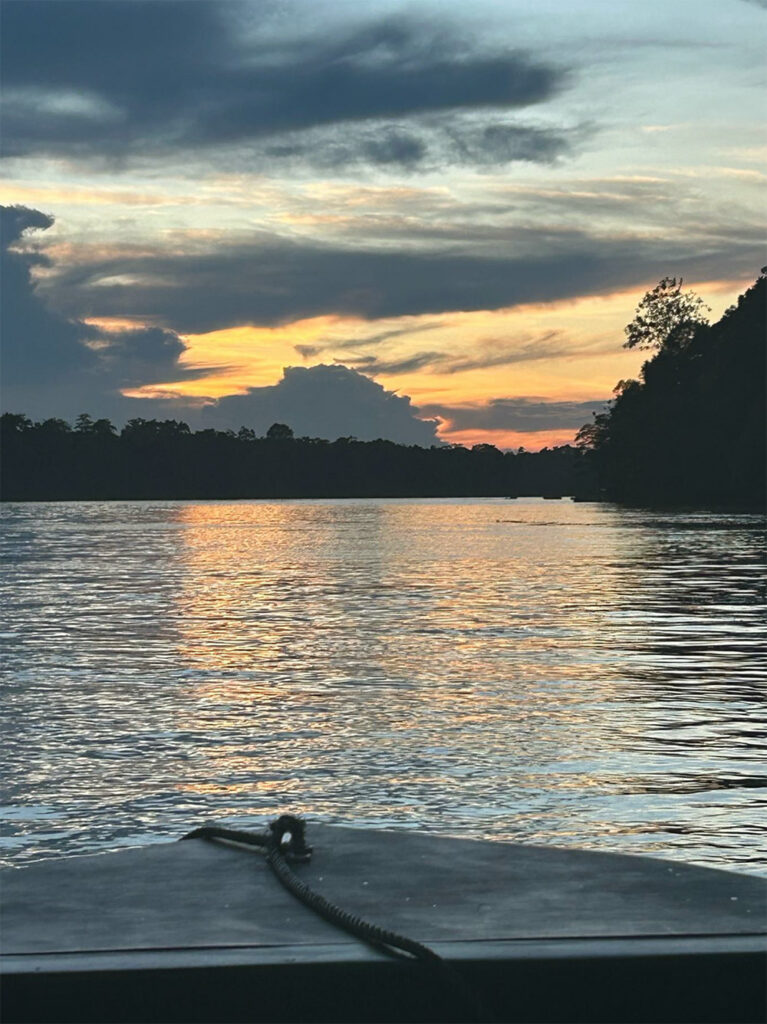
After all, there are still nature reserves that are protected and the Sukau Rainforest Lodge, where we spend a few days, is a good example of successful nature conservation. Even Sir Richard Attenborough has stayed here and praised the efforts of the local company. The company e.g. invests in the training of their rangers. We were very surprised at how thoughtful and informative our guides were. Sustainability is also a top priority. It is a successful example of ecological tourism if that even exists. Here it creates jobs, educates people, and protects nature. In the many countries we have travelled through, tourism is one of the main sources of income, which became more than evident during Covid. A difficult topic, given the recent and growing protests against over-tourism and the threat to nature.
Orang-Utans, our „forest relatives“
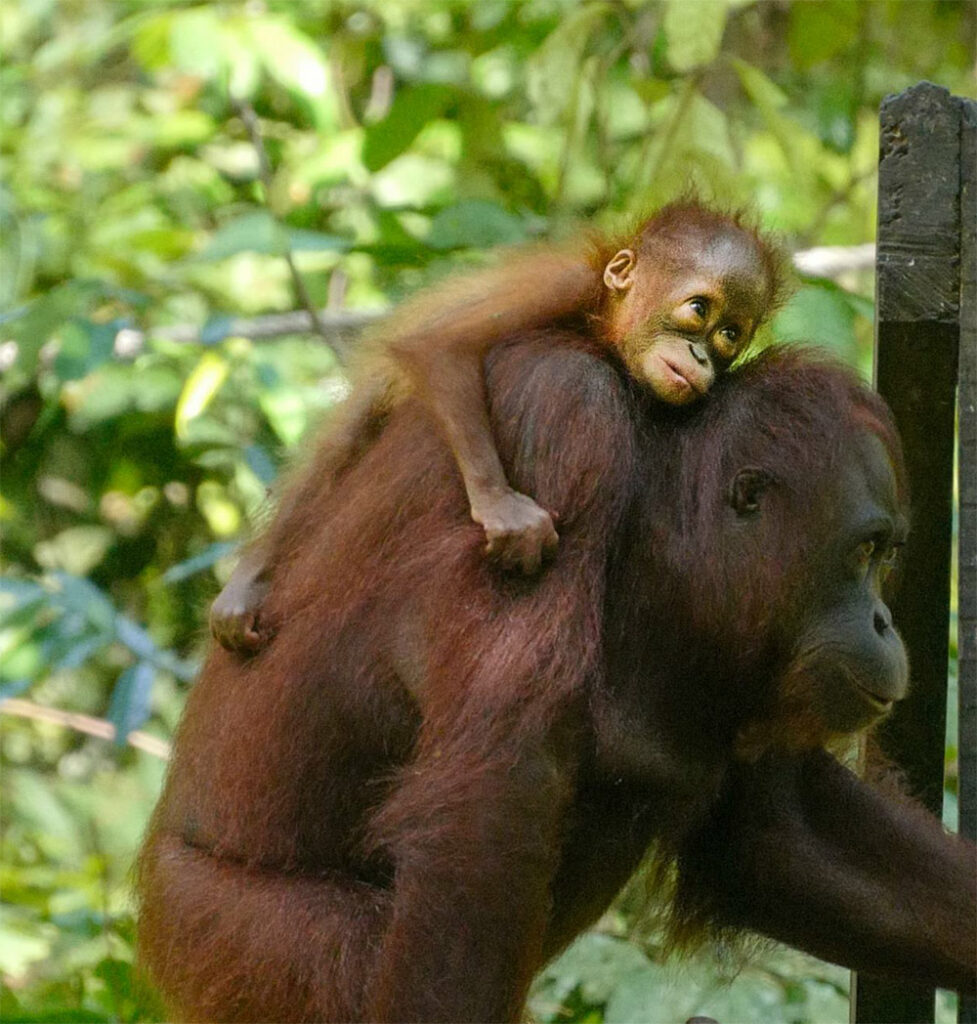
In Sandakan, the central city of Sabah, where most tourists arrive, there is a centre for orang-utans, where injured and sick apes are nursed back to health and later released into the wild. Many people come here to see the animals up close. The sanctuary is still home to primary rainforest and the feeding, which takes place twice a day in public, is well organized. Only the orang-utans don’t find the event very exciting and turn their backs on the waiting people. The only living apes in Asia with their two-metre-long arms are our closest relatives after the chimpanzees, but unlike us humans, they are solitary creatures. It is touching to see these skillful animals with their expressive faces up close and it is hopeful that care is being taken here to ensure that they are not completely displaced by humans.
Mountaineering in the tropics, Mt. Kinabalu
After impressive river and nature observation days, we make our way back to Kota Kinabalu. The drive is strenuous but takes us through the beautiful area around Mt. Kinabalu, which is an impressive 4095 metres high. The area around the mountain is a nature reserve and invites you to spend more time here. To be honest, we didn’t really have the mountain in our sights. You must plan three days for the ascent, but it should be manageable, even for inexperienced mountaineers. But we don’t want to invest the time and mountaineering in the tropics is not everyone’s passion. So we admire it from below and drive past hot springs, orchid gardens and tea plantations back to our harbour.
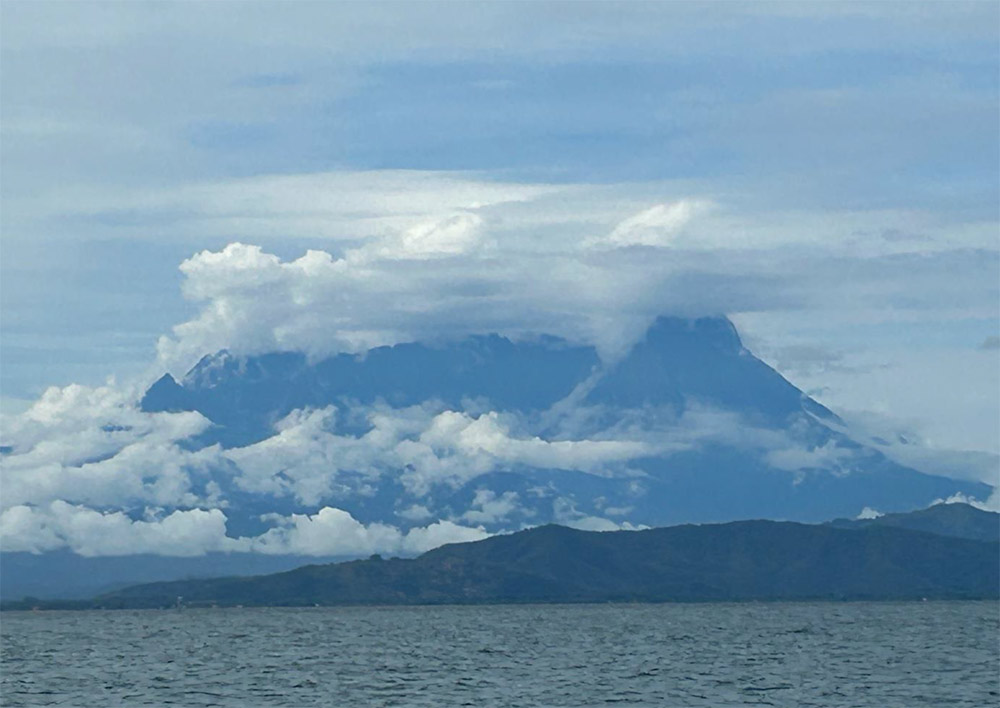
And Kota Kinabalu? It’s a growing city where the Taiwanese are flocking to buy houses and flats and enjoy their free time snorkeling and diving. In addition to Malaysian, every street and shop sign also has Chinese characters. Life here is modern and traditional at the same time. As in many Asian cities, there are hawker stalls and markets steaming and bubbling alongside modern housing estates. Exotic, dark, loud, and very delicious. Our temporary home, the Sutera Marina, is the other extreme. With restaurants, hotels, sports facilities, and a large golf course, it leaves nothing to be desired in the West.
